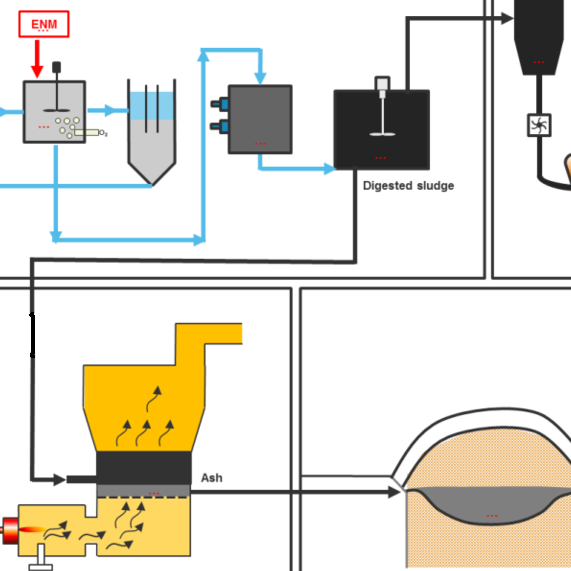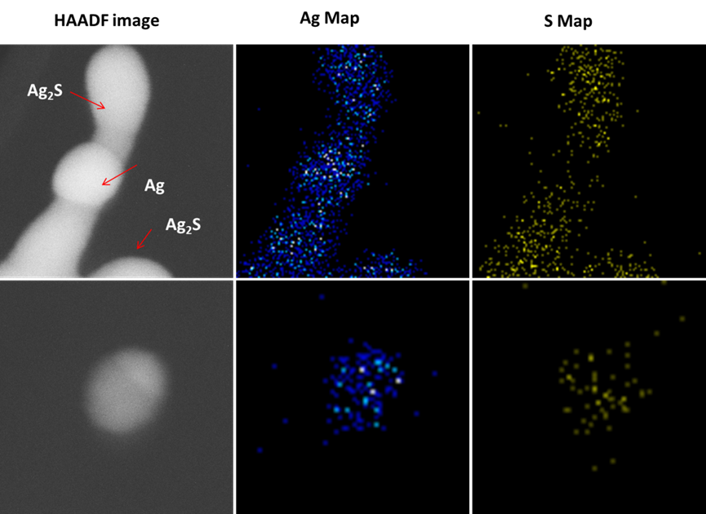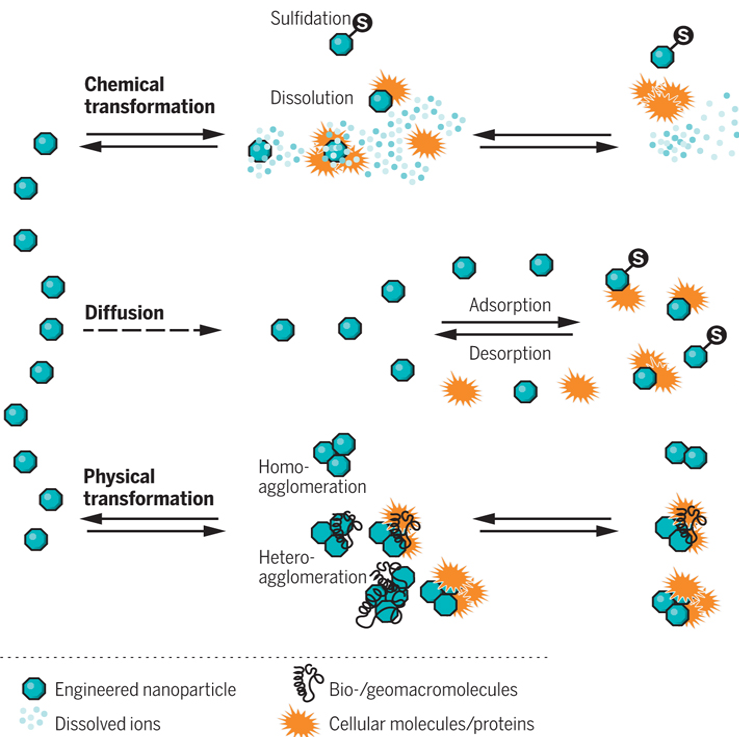Functional Fate Groups: Environmentally-transformed ENMs
NanoFASE Functional Fate groupings describe the transformed version of the NM following incubation in the specific environmental compartment, whilst also reflecting the initial NM core chemistry and whether any coating / capping / stabilizer has been retained or lost.
Where data are available, the groupings also include details of any acquired biomolecule corona, change in surface speciation, etc.
|
|
Occurs in |
|||
|
|
 Water |
 Managed waste streams |
||
Characterisation of Functional Fate Group (FFG) form

Images: Sulfidation of silver ENMs as determined using HR-TEM. Characterisation of Functional Fate Group (FFG) form, NanoFASE biota-transformed Cu(OH)2 ENMs.
Read more |
Read also |
|
Gogos A, Thalmann B, Voegelin A, Kaegi. Sulfidation kinetics of copper oxide nanoparticles. Environ. Sci.: Nano, 2017,4, 1733-1741.
|
Valsami-Jones E, Lynch I (2015) How safe are nanomaterials? Science 23 Oct 2015: Vol. 350, Issue 6259, pp. 388-389. DOI: 10.1126/science.aad0768 Mitrano DM, Motellier S, Clavaguera S, Nowack B (2015) Review of nanomaterial aging and transformations through the life cycle of nano-enhanced products. Environment International, 77, April 2014, pp 132-147. https://doi.org/10.1016/j.envint.2015.01.013 Briffa SM, Lynch I, Hapiuk D, Valsami-Jones E. (2019) Physical and chemical transformations of zirconium doped ceria nanoparticles in the presence of phosphate: Increasing realism in environmental fate and behaviour experiments. Environmental Pollution, 2019, 252, 974-981. |
Contact
 Iseult Lynch
Iseult Lynch
University of Birmingham
Email: i.lynch@bham.ac.uk



